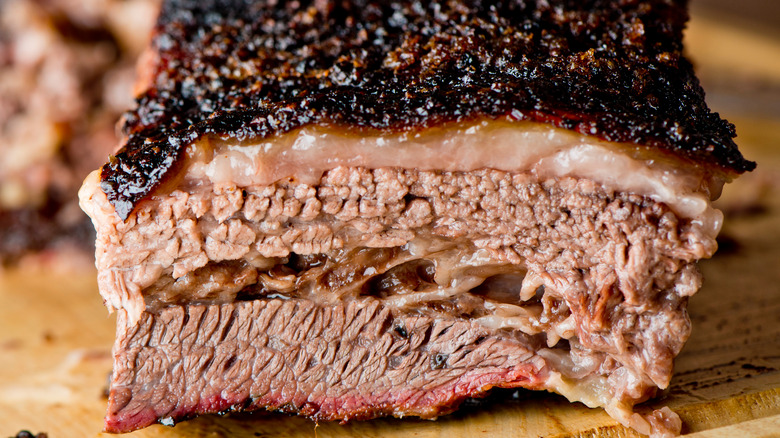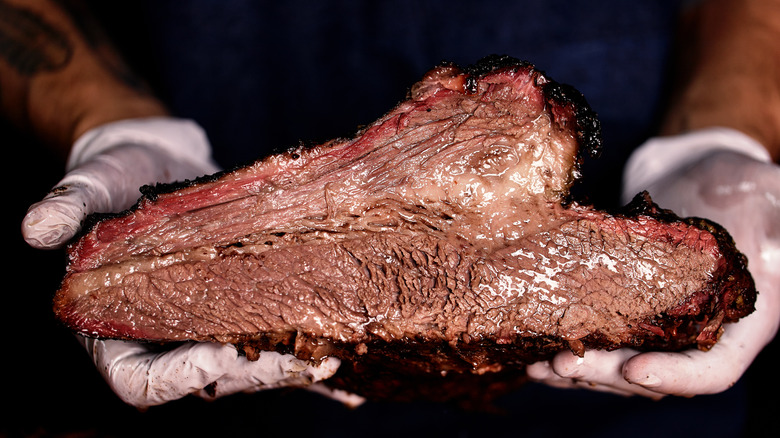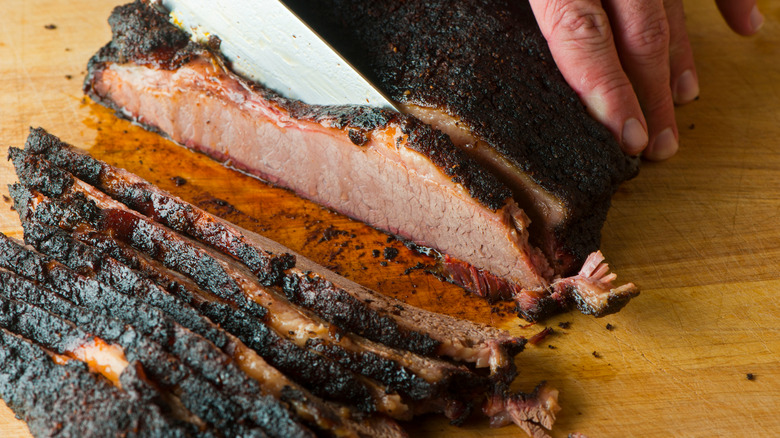The Best Way To Reheat Brisket So It Stays Juicier Than Ever
Brisket isn't just the centerpiece of a meal; it's a time-honored tradition in many cultures. Consider the smokers of Texas and the fragrant noodle soups of many Asian cultures. It is delicious as leftover additions to tacos and nachos, and no (or at least very few) Rosh Hashanah meal would be complete without the glorious portion of long-cooked brisket in a sweet and savory gravy. One of the best parts of cooking a brisket as part of a celebratory meal is that it actually gets better as it sits overnight. The brisket becomes even more flavorful and tender as it sits for at least a few hours in the fridge, making it a perfect "make ahead" meal.
However, that leaves the conundrum of wanting the convenience and additional flavor boost from cooking it ahead of time but wondering how to reheat the meat without losing the tender texture or juicy flavor. Thankfully, following a few straightforward steps ensures that the meat stays juicy even if you cook it the day beforehand.
Any way you slice it...
Brisket comes from the chest area of the animal, and as such, it's a muscle that gets a lot of exercise. This means it's naturally tough and needs a lot of cooking time to break down the connective tissue to get it really tender and let its meaty flavors shine.
Brisket also often comes with a large, thick fat cap. You can cook it with the fat cap to add flavor to the meat, then easily remove it with a knife after the meat has been refrigerated for a few hours or overnight. To keep the meat juicy when reheating, be sure to keep the oven's temperature very low. This ensures the heat will gently warm the meat instead of blasting it and drying it out. Also, let the brisket come to room temperature before you reheat it — to ensure it reheats evenly and stays moist throughout.
It's going to be delicious
When reheating the brisket, don't be shy about adding extra liquid. More braising liquid, broth, and other flavors that would compliment your recipe all help the brisket gently warm when the moisture from the liquid creates a steamy bath for the meat.
Lastly, make sure that steam heat doesn't escape. Double-wrap the top of your baking dish with foil and seal the edges firmly to really lock in that moisture. If you've cooked root vegetables along with your brisket (for example, tzimmes is a classic Jewish sweet and savory carrot and fruit braise that often cooks alongside the meat in the same pan), you can reheat that separately since it's not in the same danger of getting dry and cottony.
Now that you know how to reheat brisket, you can cook it ahead of time in the oven, your slow cooker, or your smoker. After all, you know it's going to reheat to be juicy, flavorful, and delicious every time.


